A somewhat nostalgic history of SSDs
Not that long ago, an SSD was like a magical enchantment to a computer that cost a fortune and was inaccessible to the masses. This is, of course, the days of early Core i-series CPUs and AMD Athlon and Phenom IIs, which puts us at 2008. They slowly made their way into PCs as a small boot drive alongside a larger mechanical disk for bulk data storage and over time, started replacing them as they grew in capacity.
Let’s see what options you had when you were building a PC back in those days. You could, of course, use a standard SATA hard drive, which did the job well enough. You could use two or more in a striped RAID 0 array to increase sequential speeds, but that didn’t really improve on random access times, which is the main drawback of mechanical storage mediums. There were also the WD Velociraptors. High-RPM drives which cut down access times significantly at the cost of increased noise and power consumption, as well as smaller capacities and higher cost. Not quite as high as solid-state technology at that time, so they still had an edge over the SSDs at the time.
The SSDs at the time were outrageously costly at around $1000 for a 64GB OCZ drive1. At the same time, you could buy a 300GB WD Velociraptor for £180. This was a huge difference, and the sequential speeds of these SSDs were still only around 120/100MB/s (read/write in megabytes per second), which was almost on par with the aforementioned 300GB Velociraptor2. In Q3 of 2008, we could get our hands on an 80GB Intel X25-M3 for $5954, which was a bargain compared to the drives released earlier in the very same year. This was their entry in the SSD market as well5, utilizing MLC NAND and clocking in at 240/70MB/s, which was double of the read speeds of OCZ’s and Samsung’s drives that were announced as little as 6-8 months earlier. All of these drives use SATA II, which tops out at 3Gb/s or 375MB/s, including protocol overhead, so the highest real world speeds are around 270MB/s.
I have a few images of the OCZ OCZSSD2-1S64G, which was their 64GB drive from early 2008. Rated at a sustained speed of 100MB/s.
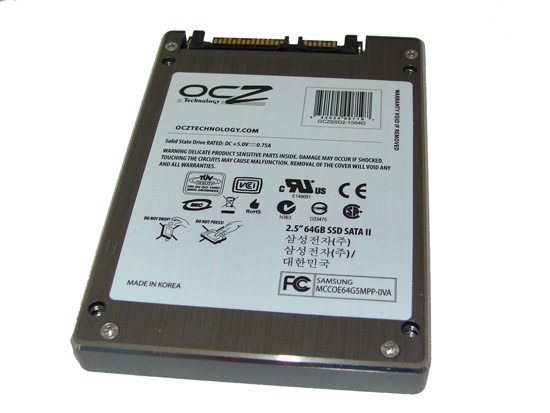
The drive itself was thicker than most modern SSDs and it was essentially a rebranded unit from Samsung. Thanks to Anandtech, I also managed to source an image of the internals of the drive. You can see the ARM-based controller and RAM chip at the far end next to the SATA connector and the 8 NAND packages. These are 64Gb 48-pin TSOP-1 packages with eight 8Gb SLC dies per package, manufactured at a 51nm node.6 There are no other flash chips on the other side of the PCB.
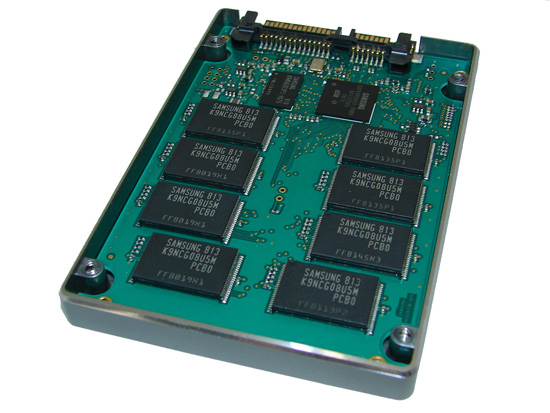
In 2009, Samsung released the SS8057. An enterprise SLC drive at capacities of 50 and 100GB with fully in-house components. It used an 8-channel controller and was rated at 230/180MB/s and 25,000/6000 IOPS. Intel’s contender was the X25-E8 with a 10-channel controller and 50nm NAND, available at 32 and 64GB capacities. These drives were both fast enough to outpace the high-speed 10-15k enterprise SAS HDDs that were available at the time. Coincidentally, I have not one, but two of the SS805s, so let’s take a look at the internals and test them in a modern system.
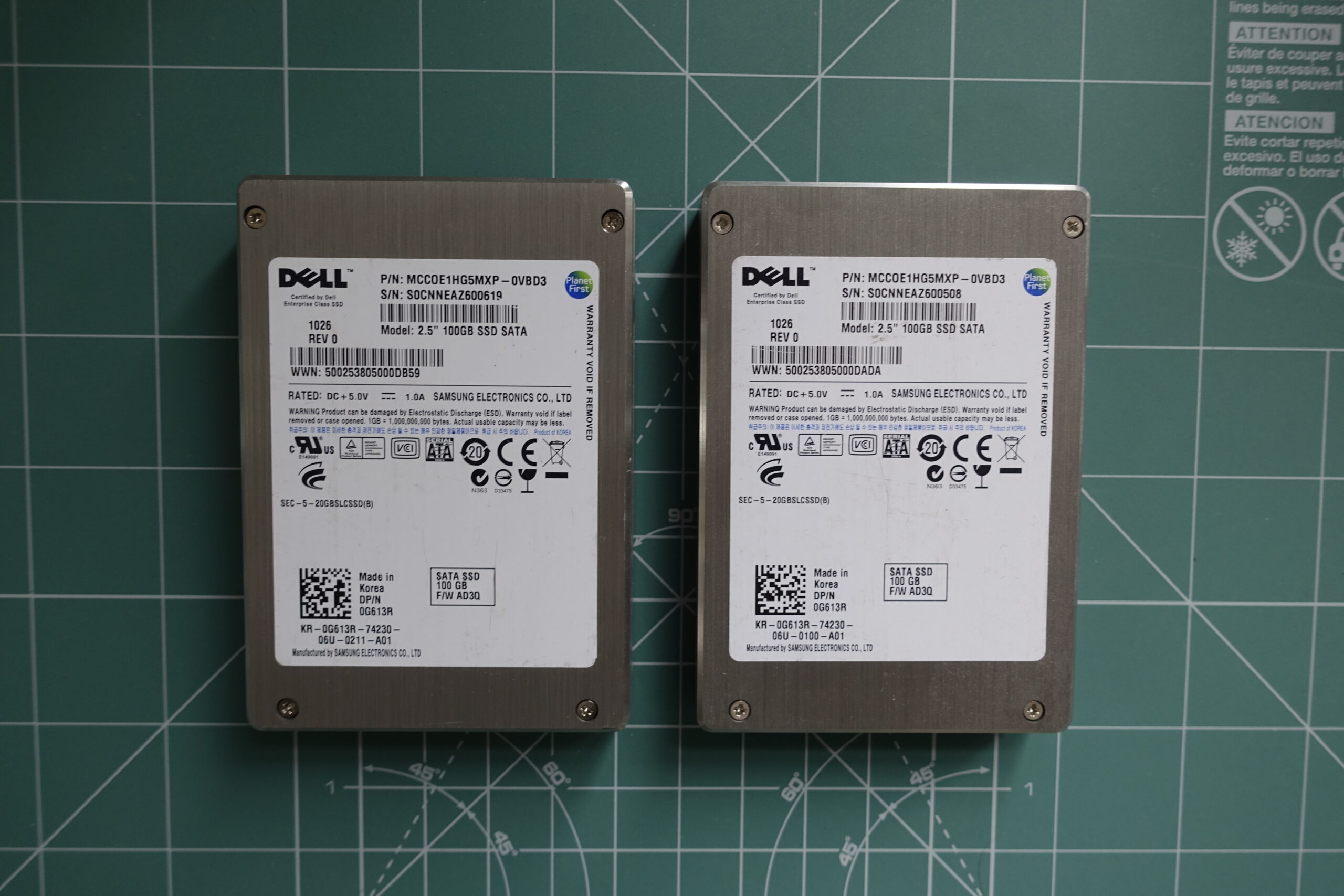
These are still SATA II drives, but nearly twice as fast as the previous generation, which is partially thanks to the SLC NAND. The controller is another custom Samsung SoC, which seems to have been used in OCZ’s Summit series drives as well9. It is paired with 1 Gigabit (128MB) of DDR1 memory in a single package and 16 NAND packages in the 100GB configuration. The 50GB drive may or may not have used half as many packages. This gives us two packages per channel.
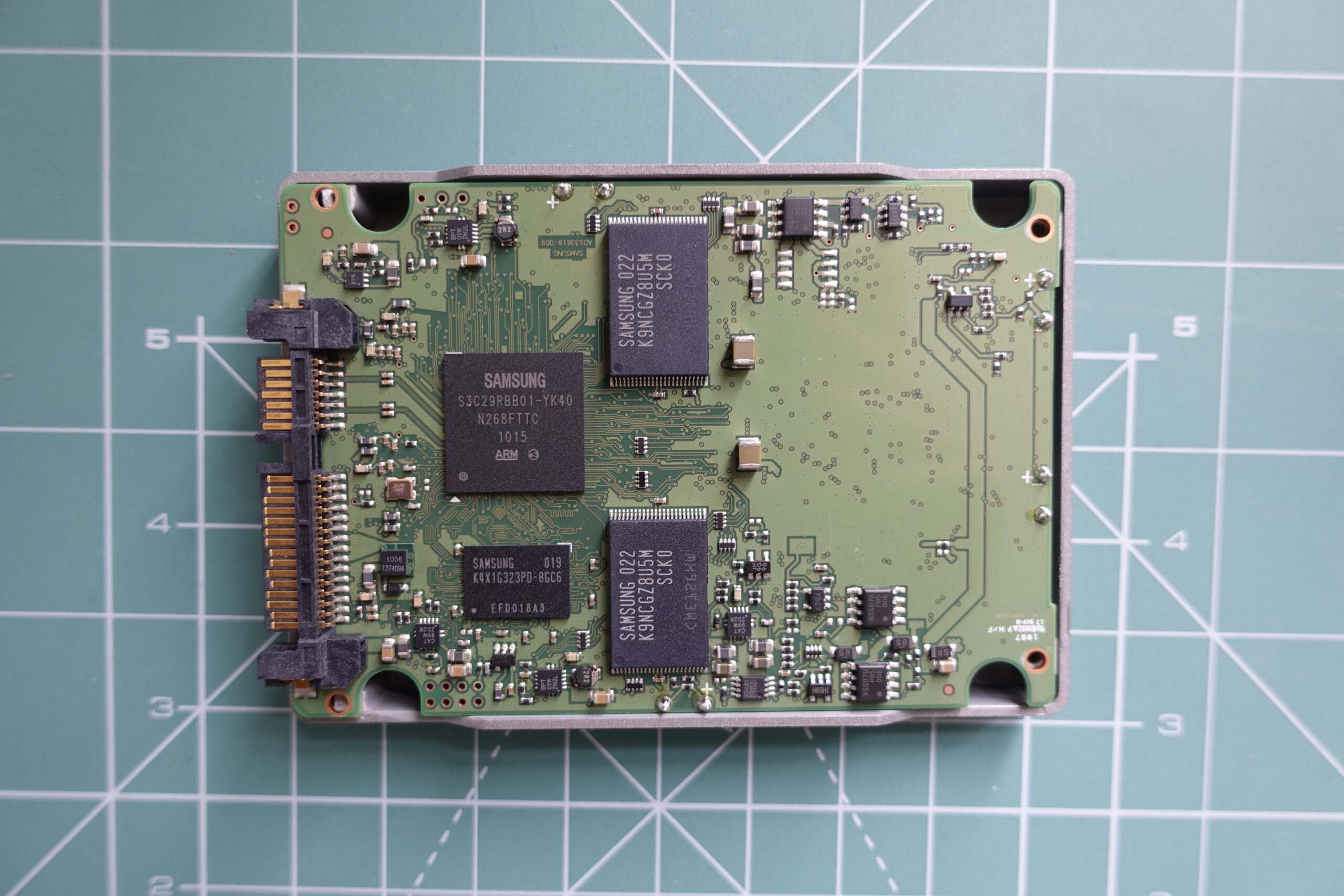
The most interesting parts are, however, the four added capacitors. These are there to ensure that any in-flight data that’s still cached in the RAM and is waiting to be written to the NAND flash can be written in the event of a sudden power loss. What I personally find a little unusual is that while the capacitors do have a thermal pad between them and the aluminium casing, the controller is not thermally coupled to it in any way. I suppose it wasn’t necessary as it doesn’t overheat as-is.
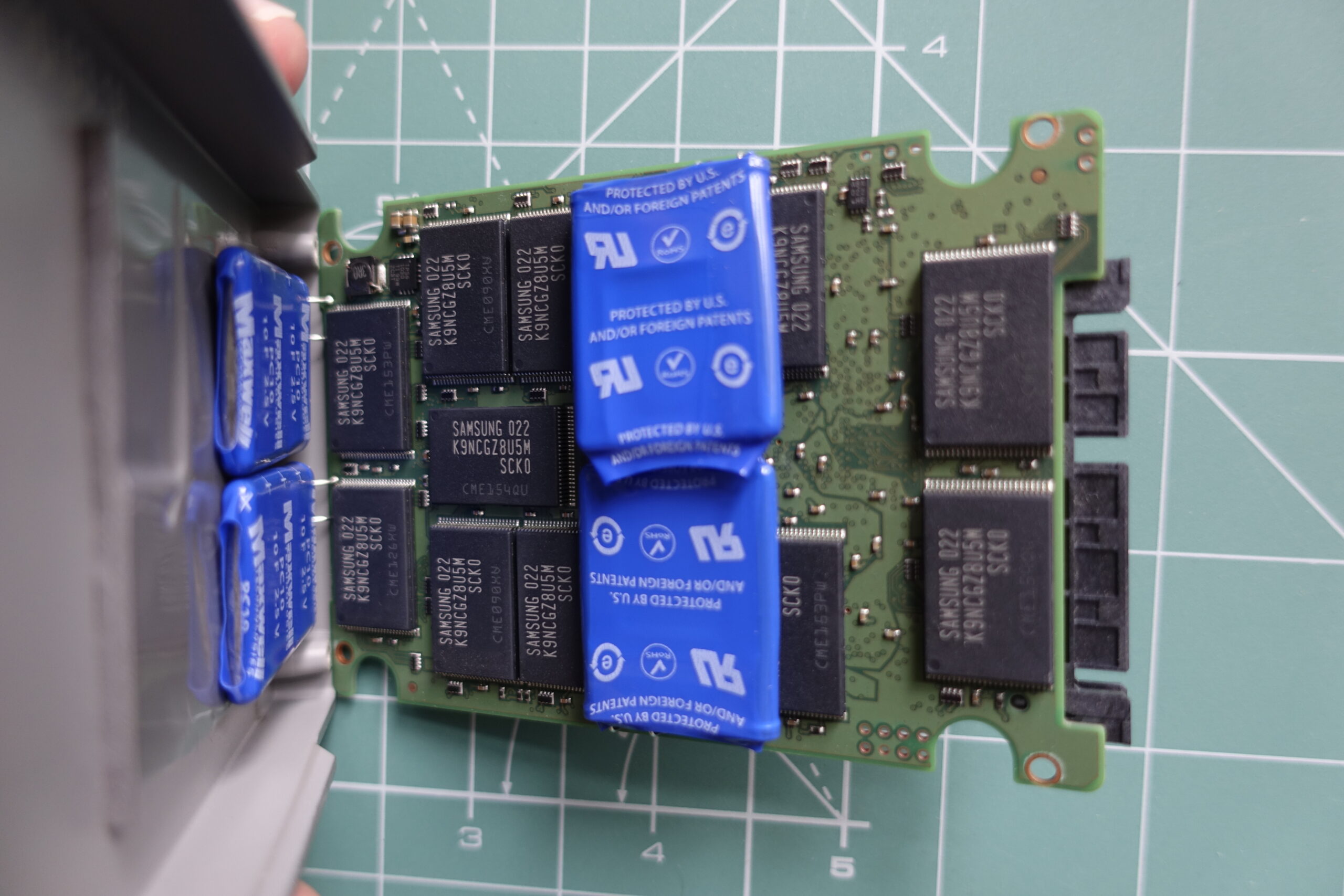
The casing is 15mm thick to allow space for the capacitors. Some 2.5″ SSDs can optionally use the 12V rail, if available, and for others it’s a requirement. This is not one of those, but the newer U.2 and U.3 drives usually need it. As most laptops do not supply 12V for 2.5″ drives, those that do need 12V cannot be used in portable devices.
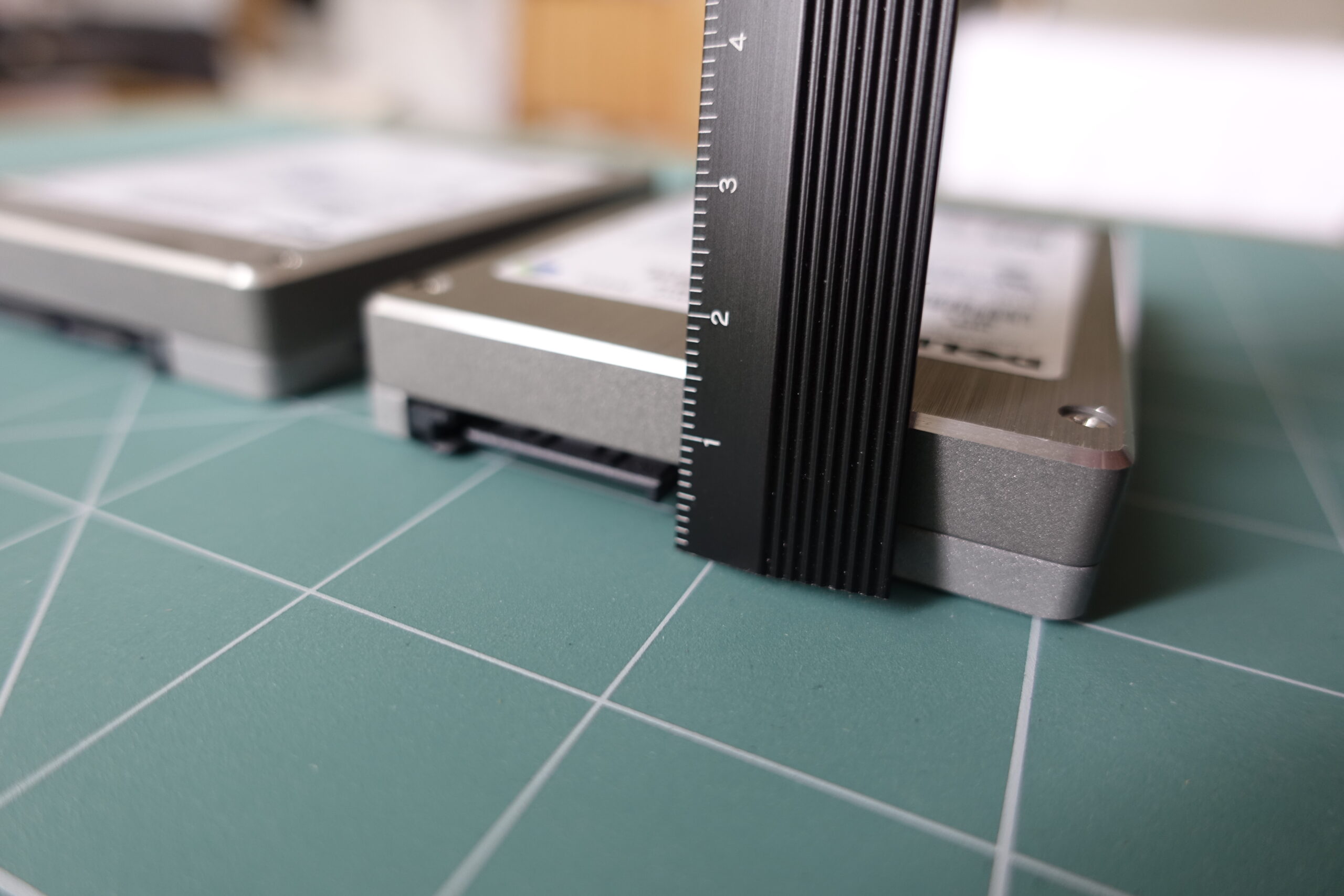
Drive speeds are what one would expect from a SATA II drive. Below is a CDM measurement, which actually puts it slightly ahead of the official claims.

For all tests, I used a Xeon E5-2640v4-based system with 32GB RAM and the drives were directly attached to the C612 chipset’s SATA ports, not the SCU unit. (Intel enterprise chipsets used to have 4/8 extra SATA/SAS ports via an added SCU unit that was part of the chipset. I did not use these.)
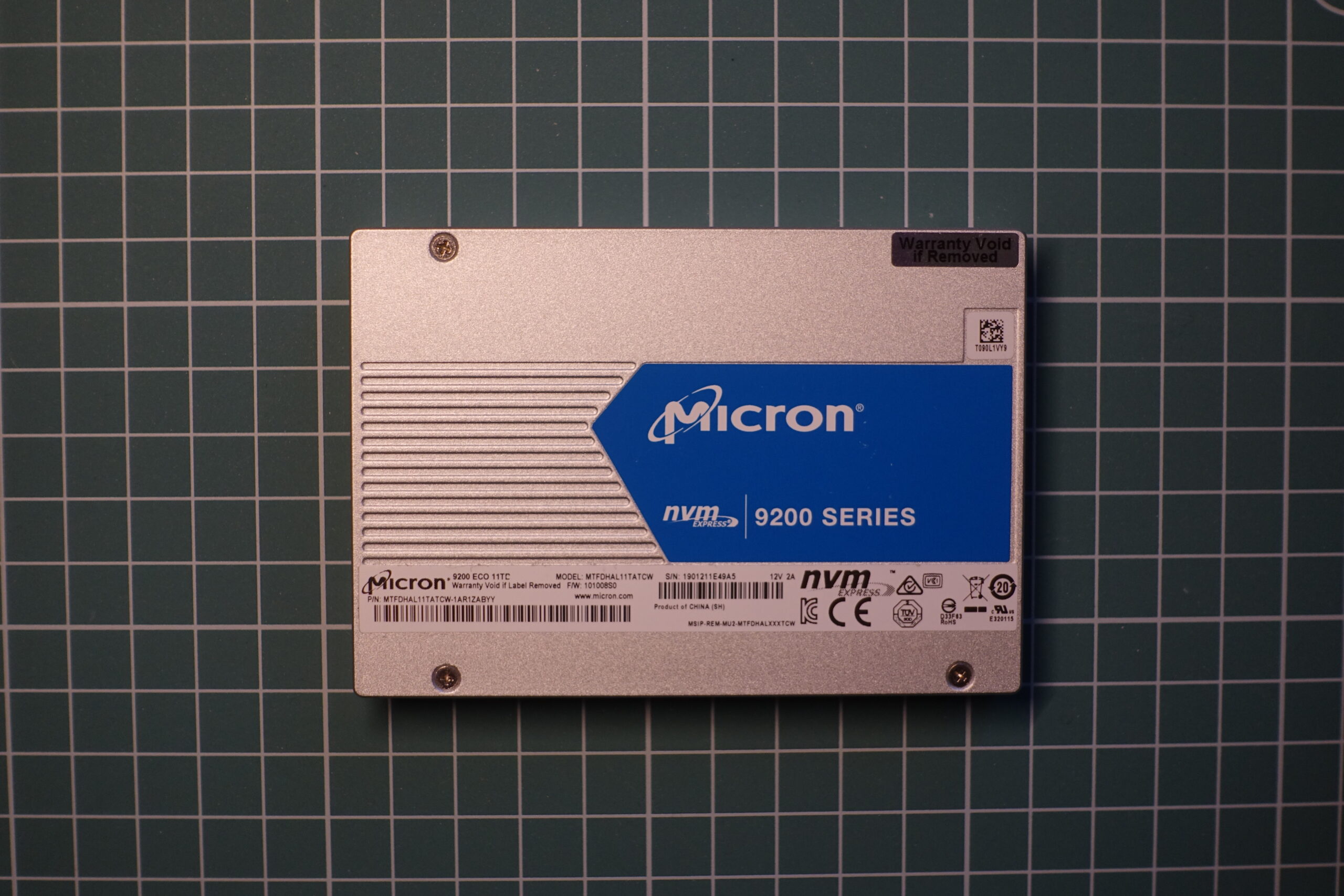
Leave a Reply